Hebrews Study #4
Hebrews 1:4 through 2:18
The charts for this study are below:
As shown in the below chart, at the bottom, the Epistle to the Hebrews makes clear in its concluding section that the goal of the book is elevating the Person and Work of the Lord Jesus Christ to its rightful place in our understanding, namely The Great Shepherd of the sheep (“the sheep”…that would be us, “the brothers” which includes “sisters”). There is no other. And such unique standing of the Lord was accomplished, as we are reminded by the following phrase, “by the blood of the eternal covenant.” The covenant in which we now stand will never end, in contrast to the old covenant (i.e. The Old Testament) which had a terminus, namely upon Jesus of Nazareth, the Lamb of God.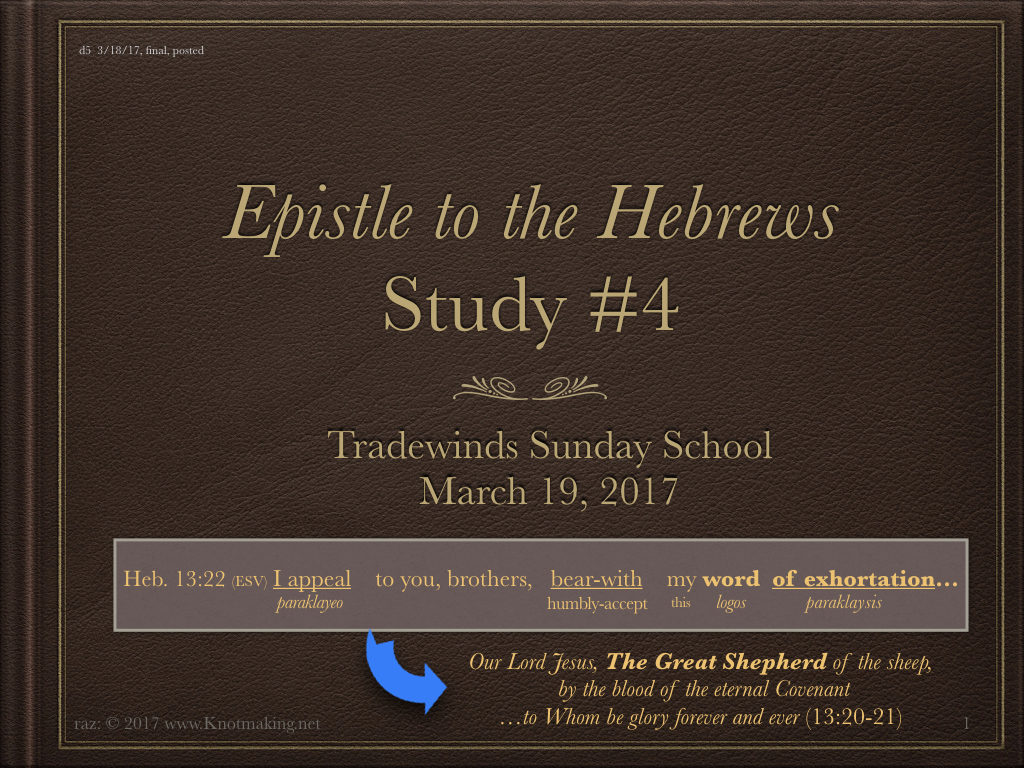 God’s Word ‘spoken’ in the Space-Time (Creation) always, always, results in a response. I see the possibilities as three, as shown below, deriving from a binary (two) response, either accepting the reformation of my mind / thinking in accordance with the truth of the God’s spoken word (shown by the right, blue arrow) or the deformation of such word driven in some way by my reasoning, environment, biology (pheromones, otherwise known as lusts / desires, often mystified and beautified in today’s lingo by “I gotta follow my heart”). Realize that our brain is about three pounds, 75% of which is water. Of the rest, it is mostly concerned with running our bodies below our level of consciousness (like breathing, digestion, bacteria / virus / cancer fighting, etc.), operating our sensory systems (sight, hearing, smelling, tasting, and touch), and storing / retrieving memory. Our resource for actually reasoning? About 1/2 pint of matter. So the old slam of referencing some immature person as ‘a half-pint,’…that would be us.
God’s Word ‘spoken’ in the Space-Time (Creation) always, always, results in a response. I see the possibilities as three, as shown below, deriving from a binary (two) response, either accepting the reformation of my mind / thinking in accordance with the truth of the God’s spoken word (shown by the right, blue arrow) or the deformation of such word driven in some way by my reasoning, environment, biology (pheromones, otherwise known as lusts / desires, often mystified and beautified in today’s lingo by “I gotta follow my heart”). Realize that our brain is about three pounds, 75% of which is water. Of the rest, it is mostly concerned with running our bodies below our level of consciousness (like breathing, digestion, bacteria / virus / cancer fighting, etc.), operating our sensory systems (sight, hearing, smelling, tasting, and touch), and storing / retrieving memory. Our resource for actually reasoning? About 1/2 pint of matter. So the old slam of referencing some immature person as ‘a half-pint,’…that would be us.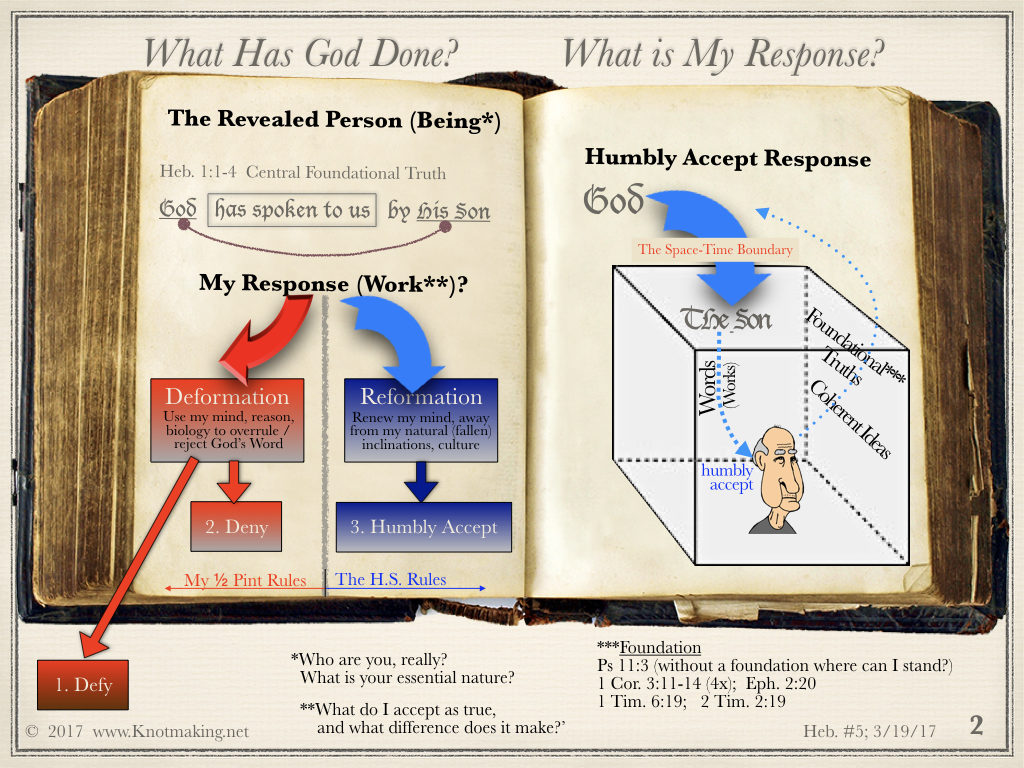
Man’s fallen heart seeks and preserves his own autonomy, authority. Basically we like the idea of our being ‘god’ and, hence, find pretty annoying that everyone else around us wants to be ‘god’ too. So how serious a matter is this natural though fallen and evil desire when it conflicts with God’s word? Our next section of our Hebrews study makes this clear. This is an important warning for us all that the book we are studying is not some archaeological exercise of mental enrichment. We are handling the very words and will of God (and there is only One, who is not us).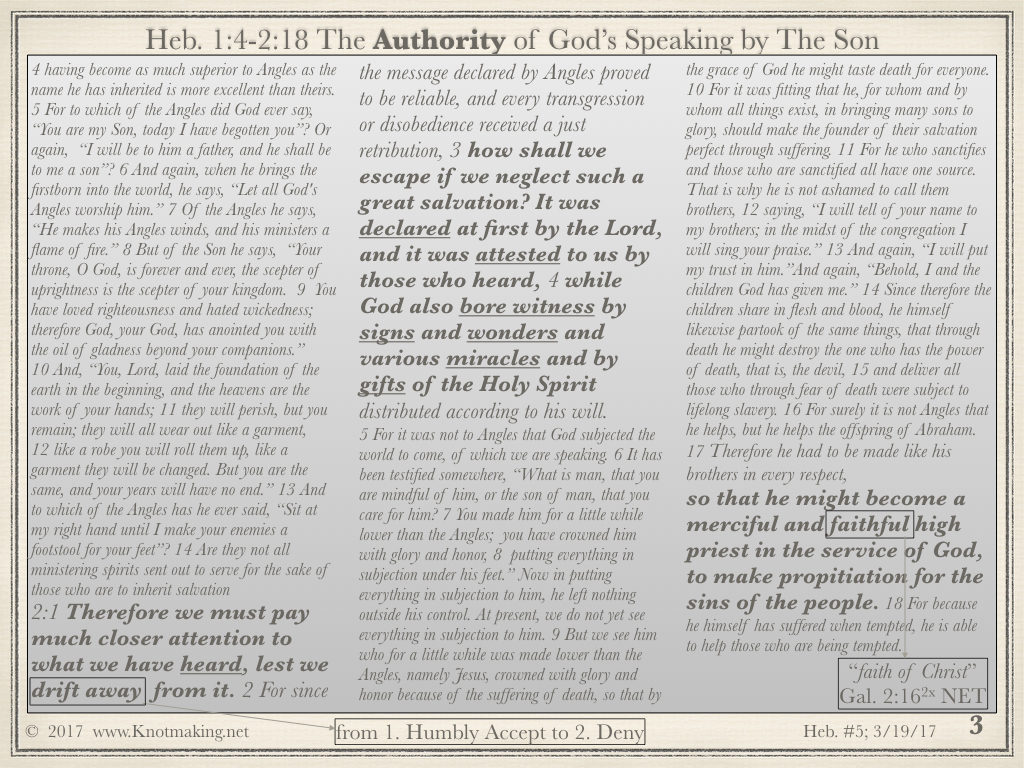
How serious are God’s words? There is a terrifying pair of passages that give us a dramatic teaching. The three Galilean cities mentioned here–Chorazin, Bethsiada, and Capernaum–were all places Christ performed many miraculous signs but even more importantly proclaimed God’s word. We understand later that the religious center of Israel in Jerusalem and the legalists there rejected Jesus as the Christ and conspired with their Roman overlords to have Christ crucified. However what the below passages tells us that the people of these Galilean cities will face the horrific, eternal damnation of God because of their rejection (deformation into denial) of God’s word. We find this shocking on two levels. One is how can such rejection about ‘mere words’ be worse in some grand scheme of merit than the evils of the comparison cities in the below texts, namely Sodom, Tyre, and Sidon. (Sodom we know, but Tyre and Sidon were great prosperous self-dealing leading cities in the Roman Empire, and earlier in history). The second reason we are shook by the below is that these people will be judged for what looks to our fallen sensibilities as nothing all that serious. But, God’s word makes it clear that our response to God’s word is of the utmost seriousness–there is nothing that is more serious. (We might add a third shocking element, not in our scope here, that clearly evidences God’s Sovereignty in what He reveals of Himself to what situation and what He thereby uses in judgment; this is not an easy matter. For further thinking about this I refer you to the Book of Job Studies at www.idealmaking.org .)
I was privileged to take that photo shown below while standing on the grounds of the very synagogue that was present at the time of Jesus. The view I shot encompasses the Sea of Galilee at the left, as Capernaum was a fishing village right on the Western shore of the the sea. (On the far right is a modern structure that has been built above what some believe was the site of the home of Peter; the archaeological evidence is pretty thin, but it’s possible). The stones I was standing on are from the 5th Century synagogue which was built over the one existing at the time of Jesus and which stones can be seen in a side view (not shown here). 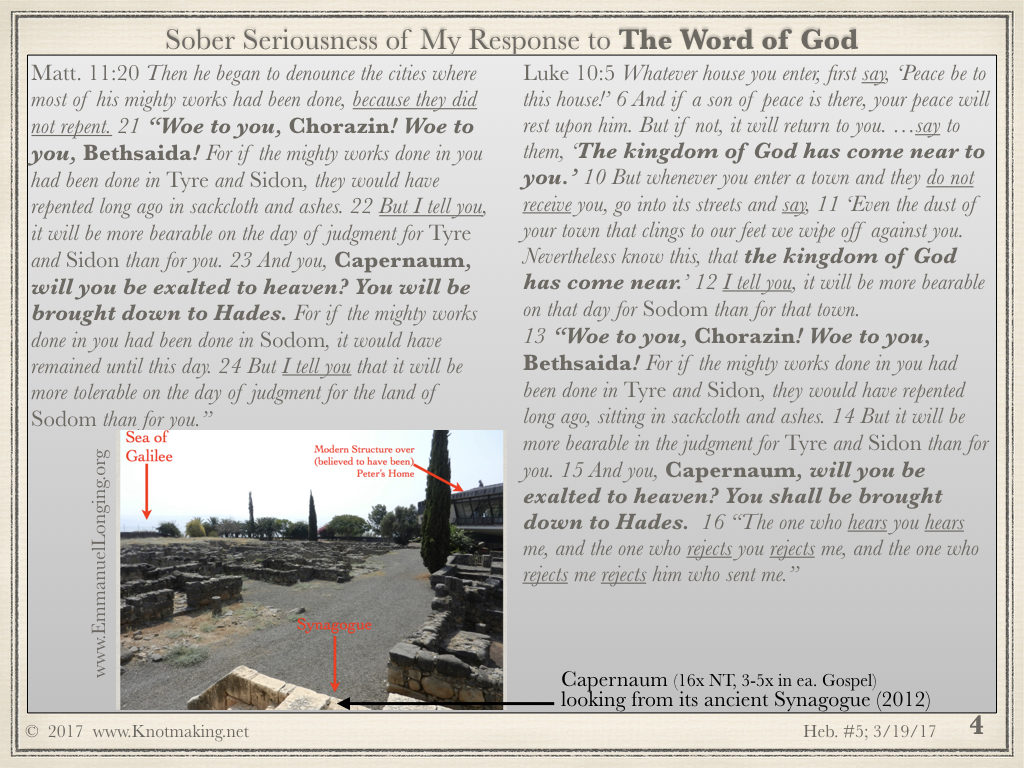
Even as God spoke into Space-Time prior to Christ (OT) and immediately after (NT) through “messengers,” His Word was both authoritative and eternally important.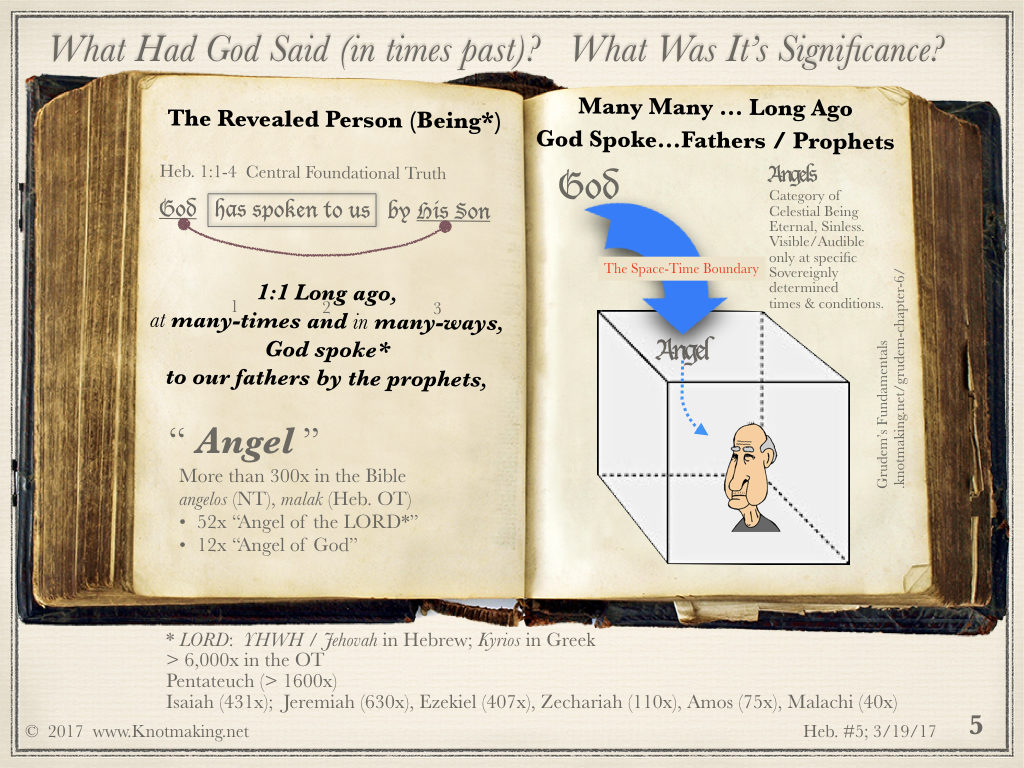
Beginning in Heb. 1:4 and extending to the end of Ch. 2, The Son is contrasted with “Angels” (messengers). This contrast is a caution to us even today as our natural temptation is to give weight to “messengers” (both real and fake) sometimes overtaking even the importance to God’s very word.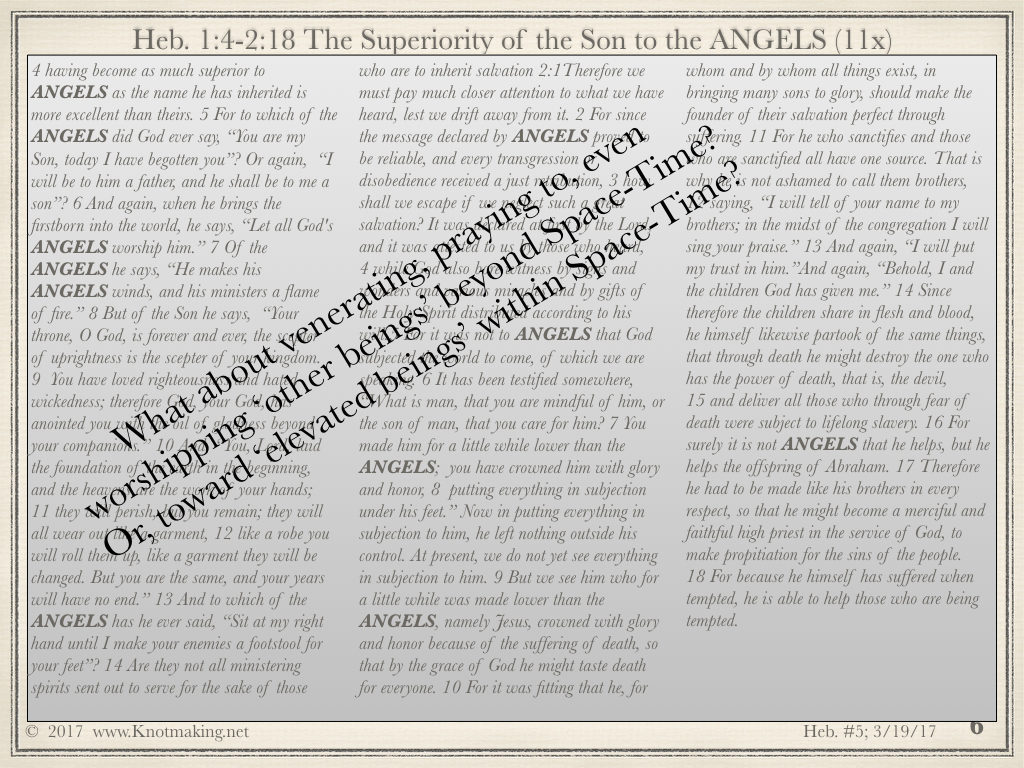
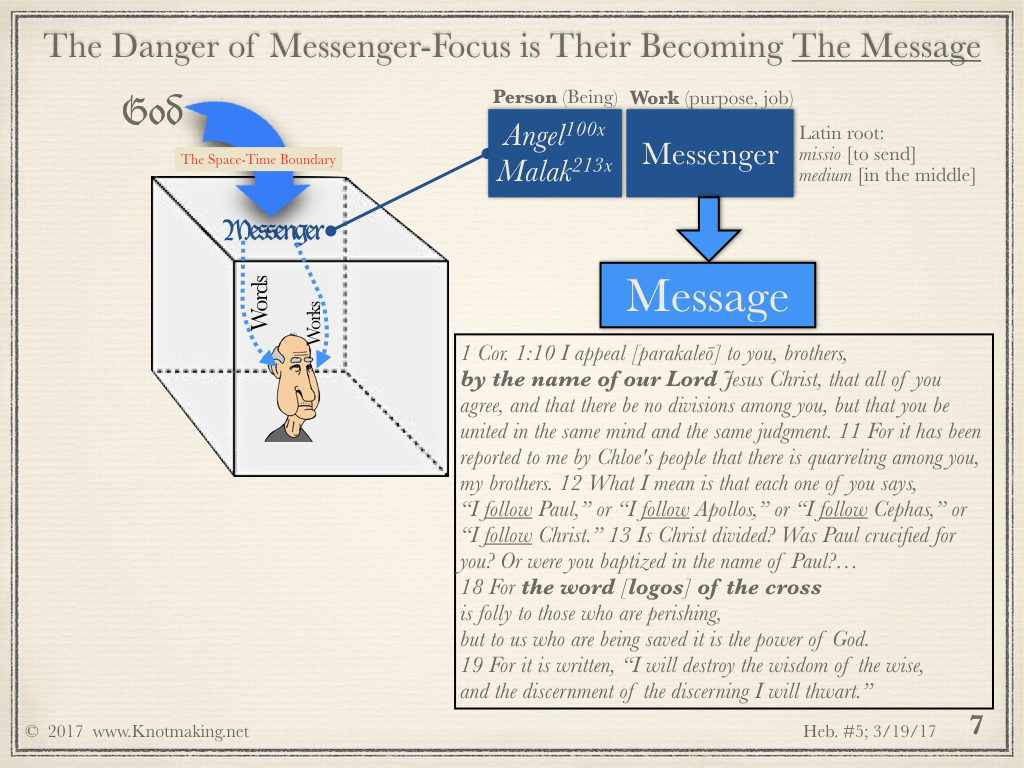
Just to be absolutely clear, the below chart is not presented as an example for us to follow regarding Mary the mother of Jesus as God’s messenger let alone as our mediator. One of the cornerstone tenets of the Reformation was against such false teaching. Mary was clearly the mother of Jesus; but she was not “the mother of God,” as God has no creator or mother. Were she so (the mother of God), she would be truly “God” and the person we know as “God the Father,” or the 1st Person of the Trinity, would be some lesser ‘god’ much like the pagan pantheons of ‘gods’ in both Greek and Roman culture. The purpose of the below chart is to provide a caution for all of us to not elevate anyone. There is only One Great Shepherd of the sheep, and Savior of sinners. God uses various humans in various ways, with gifts and callings, but all such are servants of God, not persons to be venerated.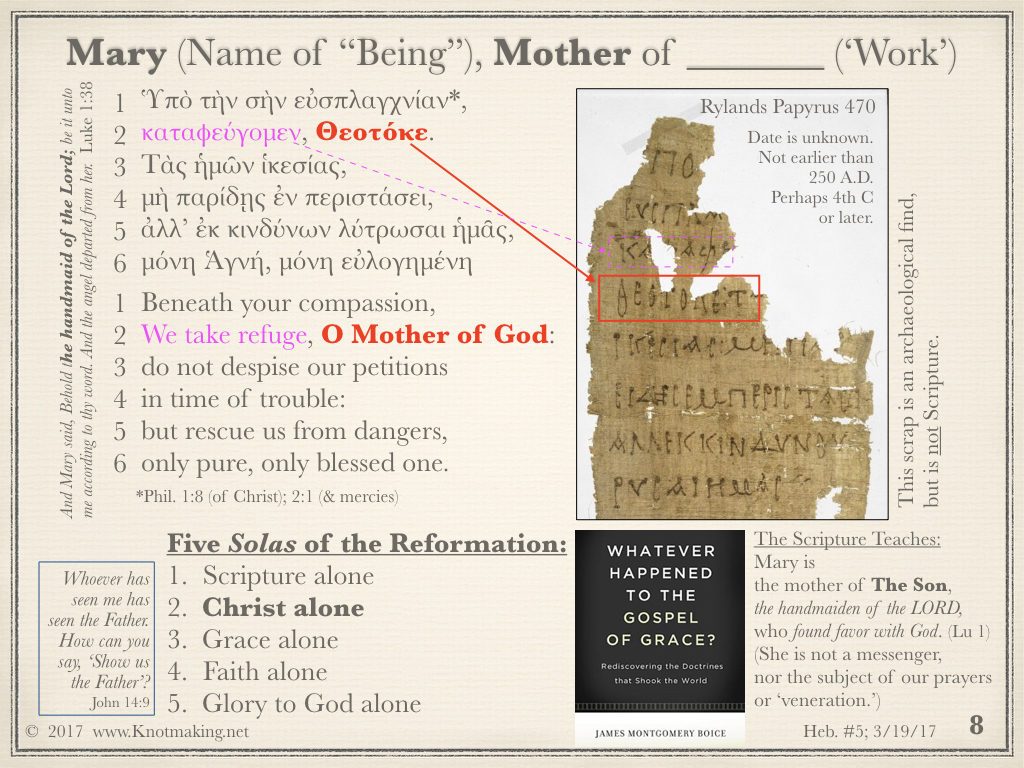
As we discussed in Heb. Study #1, we have examined the opening words of this Epistle by first proposing a central claim (“what this is about”) and then postponing the examination of what the text then says about “what it is about.” Below summarizes these additional key points.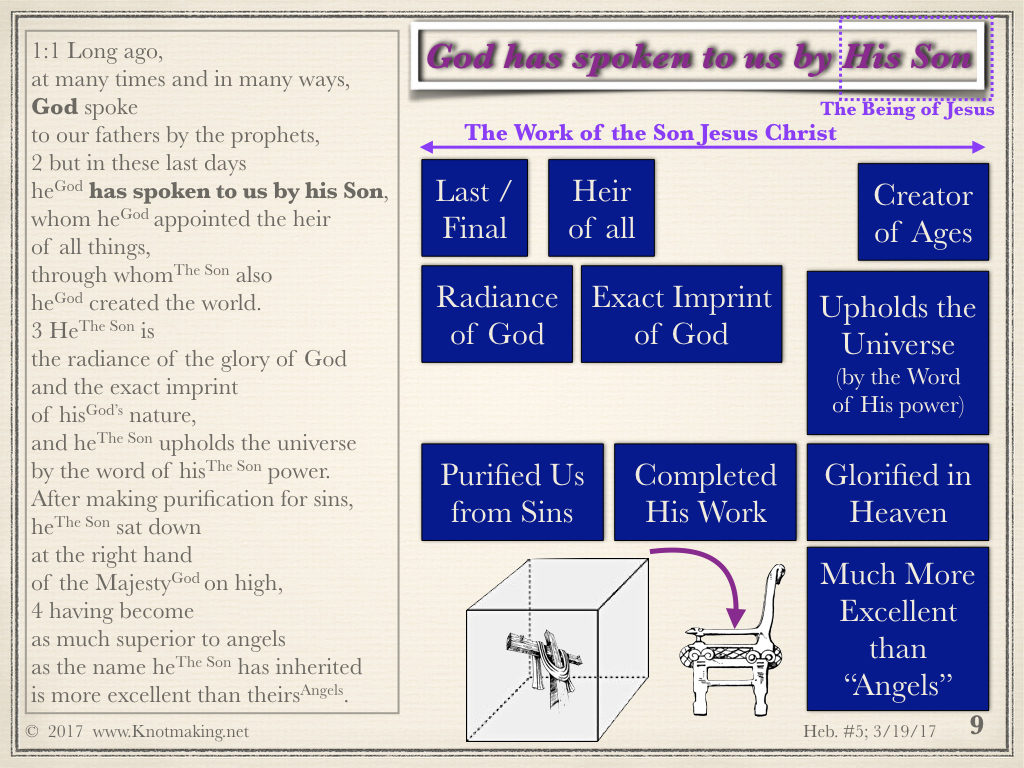
Now digging into the text, we begin by observing the contrasting characterization of “the Son” with “Angels.” 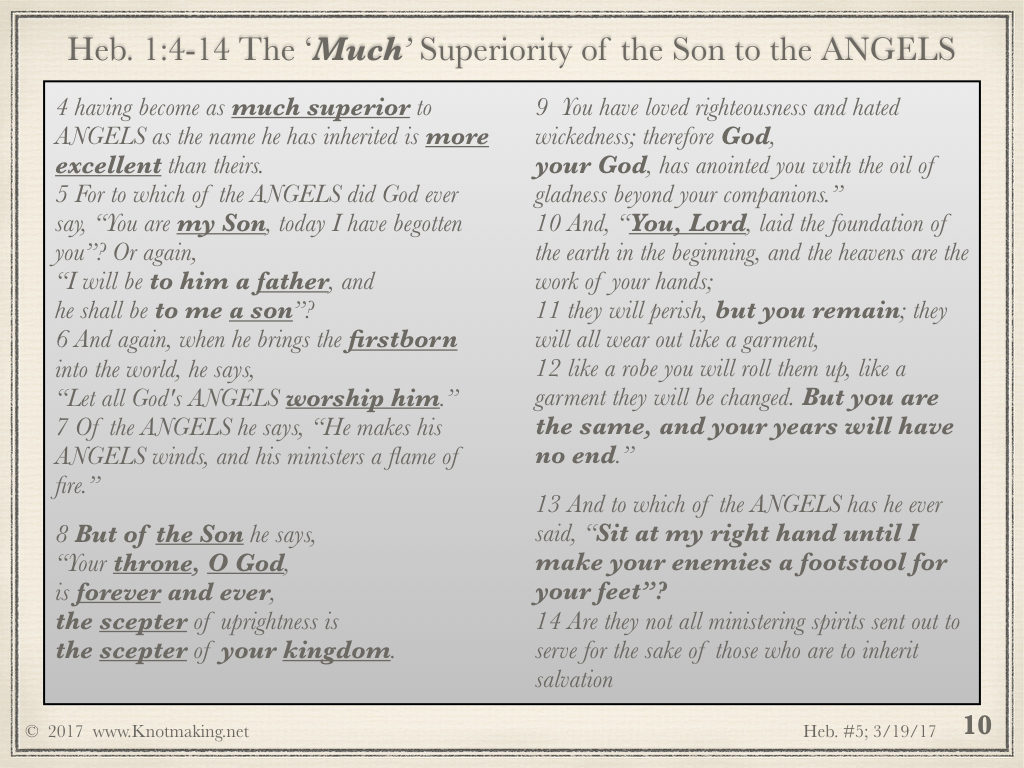
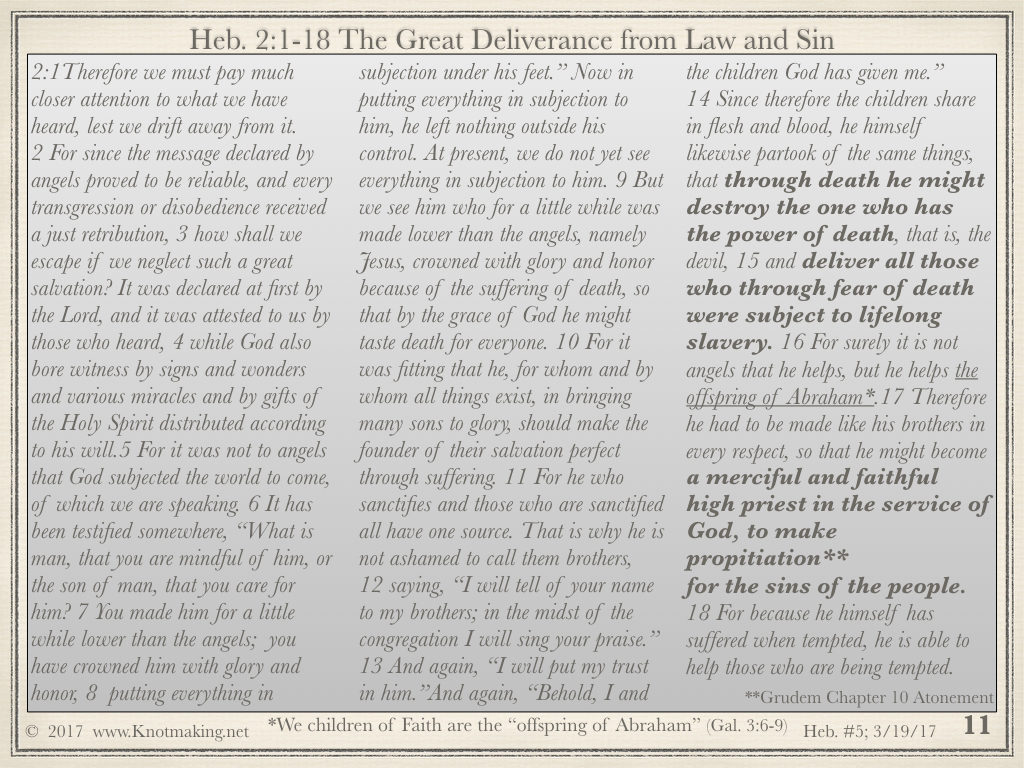
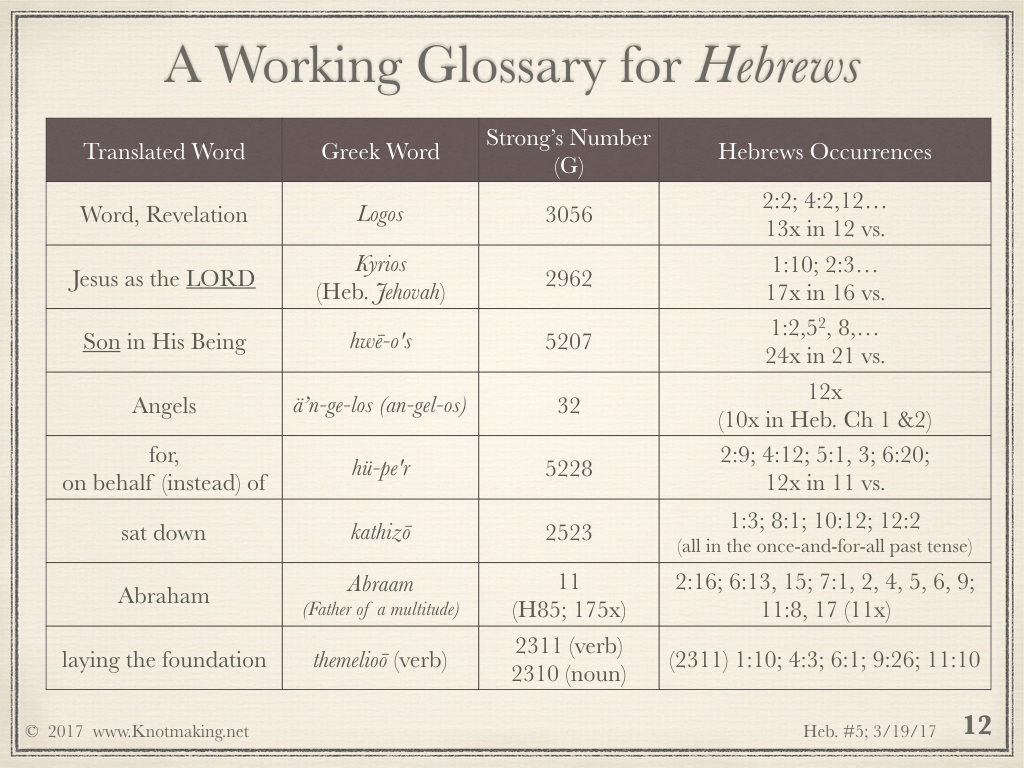
Hebrews Study #5 is here: